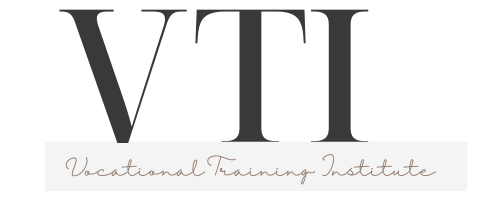Are you ready to unlock your potential through vocational training? In today’s competitive job market, accessible training programs are essential for everyone.
But what if barriers like socioeconomic disparities, disabilities, gender inequality, and cultural differences hinder your access?
This article explores the importance of ensuring vocational training is accessible to all, addressing these obstacles head-on.
By creating inclusive programs and providing support, we can empower individuals from all backgrounds to thrive and succeed in their chosen careers.
Key Takeaways
- Accessible vocational training promotes equal opportunities for all individuals.
- Barriers to vocational training include socioeconomic barriers, lack of information and guidance, discrimination and bias, and physical barriers.
- Strategies for inclusion in vocational training include financial support, increased outreach efforts, policy changes, and improved accessibility.
- Addressing socioeconomic disparities in vocational training can be done through establishing financial assistance programs, launching community outreach initiatives, and ensuring equal access opportunities.
The Importance of Accessible Vocational Training
You should understand the importance of accessible vocational training. Accessible vocational training refers to training programs that are designed and implemented in a way that removes barriers to accessibility and creates inclusive learning environments for all individuals. It’s crucial to ensure that vocational training is accessible to everyone, regardless of their background, abilities, or any other factors that may hinder their participation.
One of the main reasons why accessible vocational training is important is because it promotes equal opportunities for all individuals. By removing barriers to accessibility, such as physical, financial, or informational barriers, vocational training becomes more inclusive and allows individuals from diverse backgrounds to access the same opportunities for skill development and employment.
Moreover, accessible vocational training plays a vital role in bridging the skills gap and addressing unemployment. By providing training opportunities that are accessible to all, individuals who face barriers to employment can acquire the necessary skills and knowledge to enter the workforce. This not only benefits the individual but also contributes to the overall economic growth and development of a society.
Inclusive learning environments within vocational training programs also foster diversity, creativity, and innovation. When individuals from different backgrounds and with different abilities come together to learn and work, they bring unique perspectives and experiences that can lead to new ideas and solutions.
Identifying Barriers to Vocational Training
Identifying common barriers to vocational training is essential for creating inclusive and accessible learning environments. By understanding and addressing these barriers, educators and policymakers can develop strategies for inclusion that ensure vocational training is accessible to all individuals, regardless of their background or circumstances.
Here are some key barriers to vocational training that need to be considered:
-
Socioeconomic barriers: Limited financial resources can prevent individuals from accessing vocational training programs. Lack of funding for tuition fees, transportation costs, and necessary equipment can become significant barriers for those who are economically disadvantaged.
-
Lack of information and guidance: Many individuals may be unaware of the vocational training opportunities available to them or may lack the guidance necessary to navigate the system effectively. This can result in a lack of awareness and understanding of the benefits and pathways of vocational training.
-
Discrimination and bias: Discrimination based on factors such as race, gender, disability, or socioeconomic status can create barriers to vocational training. Prejudice and bias can limit opportunities and create unequal access to training programs.
-
Accessibility and accommodation: Physical barriers, such as inaccessible buildings or lack of accommodations for individuals with disabilities, can prevent equal participation in vocational training programs.
To overcome these barriers, it’s crucial to implement strategies for inclusion. These strategies may include providing financial support and scholarships for economically disadvantaged individuals, increasing outreach efforts to ensure information about vocational training is widely available, addressing discriminatory practices through policy changes, and improving accessibility by making physical modifications and accommodations.
Addressing Socioeconomic Disparities in Vocational Training
To address socioeconomic disparities in vocational training, there are several strategies that can be implemented.
Firstly, financial assistance programs can be established to provide financial support to individuals from low-income backgrounds, making vocational training more affordable and accessible.
Additionally, community outreach initiatives can be launched to raise awareness about vocational training opportunities and to actively engage individuals from disadvantaged communities.
Lastly, ensuring equal access opportunities by removing barriers such as discriminatory admission practices or limited availability of training programs can help bridge the gap and ensure that vocational training is accessible to all, regardless of socioeconomic status.
Financial Assistance Programs
If you’re struggling to afford vocational training, financial assistance programs can provide the support you need to pursue your career goals. These programs aim to address the socioeconomic disparities that often hinder individuals from accessing vocational training opportunities.
Here are some key ways in which financial assistance programs can help:
-
Financial Aid: Many vocational training institutions offer financial aid options such as grants, loans, and work-study programs. These can help cover tuition fees, textbooks, and other related expenses.
-
Scholarship Programs: Scholarships are a form of financial assistance that don’t need to be repaid. They’re often awarded based on academic merit, financial need, or specific criteria set by the funding organization.
-
Income-Based Assistance: Some financial assistance programs take into account your income level and offer reduced tuition fees or subsidies based on your financial situation.
-
Support Services: Financial assistance programs may also provide additional support services such as career counseling, job placement assistance, and mentorship opportunities to help you succeed in your chosen field.
Community Outreach Initiatives
To address the socioeconomic disparities in vocational training, you can participate in community outreach initiatives that aim to promote equal access and opportunities for all individuals. These initiatives involve community partnerships and mentorship programs that target individuals from disadvantaged backgrounds and provide them with the necessary resources and support to pursue vocational training.
Community partnerships play a crucial role in ensuring that vocational training programs reach individuals who may not have access to them otherwise. By collaborating with local organizations, schools, and community centers, vocational training institutions can identify and reach out to individuals who may be interested in pursuing vocational education but lack the necessary means. These partnerships help bridge the gap between vocational training institutions and underserved communities, ensuring that opportunities for vocational training are accessible to all.
Mentorship programs are another vital component of community outreach initiatives. By pairing individuals from disadvantaged backgrounds with mentors who’ve experience in their chosen vocational field, these programs provide guidance, support, and encouragement throughout the training process. Mentors can share their knowledge, skills, and experiences, helping mentees navigate the challenges they may encounter and providing them with valuable insights and advice. Mentorship programs not only assist individuals in gaining the necessary vocational skills but also help build confidence, self-esteem, and a sense of belonging, ultimately increasing their chances of success in their chosen field.
Equal Access Opportunities
You can help address socioeconomic disparities in vocational training by advocating for equal access opportunities. By promoting equal opportunity and supporting inclusion initiatives, you can contribute to creating a level playing field for individuals from all socioeconomic backgrounds.
Here are some ways you can make a difference:
-
Lobby for policies that prioritize equal access to vocational training programs for individuals regardless of their socioeconomic status.
-
Support organizations and initiatives that provide scholarships and financial aid to disadvantaged individuals, helping them overcome financial barriers to vocational training.
-
Encourage vocational training institutions to implement outreach programs in underserved communities, ensuring that individuals from all backgrounds have access to information and resources.
-
Promote mentorship programs that connect disadvantaged individuals with professionals in their desired vocational fields, providing guidance and networking opportunities.
Creating Inclusive Vocational Training Programs
To create inclusive vocational training programs, it’s crucial to remove financial barriers that may prevent individuals from accessing these programs. Providing scholarships, grants, or low-cost tuition options can help ensure that individuals from all socioeconomic backgrounds have equal opportunities to participate.
Additionally, adapting the curriculum to accommodate individuals with disabilities is essential for creating an inclusive environment. This can involve providing assistive technologies, modifying teaching methods, and offering support services to meet the unique needs of each learner.
Removing Financial Barriers
Don’t let financial barriers hinder your access to inclusive vocational training programs. When it comes to pursuing vocational training, there are various financial aid options and scholarship opportunities available to help you overcome these obstacles. Here are some ways to remove financial barriers and make vocational training more accessible:
-
Financial Aid: Explore the different types of financial aid, such as grants, loans, and work-study programs, that can help cover the costs of tuition, books, and supplies.
-
Scholarship Opportunities: Research and apply for scholarships specifically designed for vocational training programs. Many organizations and institutions offer scholarships based on academic achievements, financial need, and specific career goals.
-
Government Programs: Look into government-funded programs like the Workforce Innovation and Opportunity Act (WIOA) that provide financial assistance and support services to individuals seeking vocational training.
-
Employer Assistance: Some employers offer tuition reimbursement or sponsorship programs to support their employees’ vocational training endeavors.
Adapting Curriculum for Disabilities
When adapting the curriculum for disabilities, it’s important to create inclusive vocational training programs. Adapting teaching methods and strategies can help ensure that individuals with disabilities have equal access to vocational training and opportunities for skill development.
Inclusive classrooms provide an environment where all learners, regardless of their abilities, can participate and thrive. One approach is to modify the curriculum by using different instructional materials and techniques that cater to diverse learning styles and needs. For example, incorporating visual aids, hands-on activities, and assistive technologies can enhance the learning experience for individuals with disabilities.
Additionally, providing additional support and accommodations, such as extended time for assignments or alternative assessment methods, can help level the playing field and promote success for all learners.
Supporting Individuals With Disabilities in Vocational Training
You can ensure that individuals with disabilities receive the necessary support in vocational training. By providing supporting assistive technology and inclusive accommodations, you can create an environment that allows them to thrive and succeed. Here are some key strategies to consider:
-
Accessible Facilities: Ensure that the training facilities are accessible to individuals with disabilities. This may include ramps, elevators, and accessible restrooms, among other necessary modifications.
-
Assistive Technology: Explore and provide assistive technology options that can help individuals with disabilities overcome barriers and access vocational training. This may include screen readers, speech recognition software, or adaptive equipment.
-
Individualized Support: Recognize that each individual has unique needs and provide individualized support. This may involve creating personalized learning plans, assigning mentors or support personnel, and offering additional resources or accommodations as needed.
-
Inclusive Curriculum: Adapt the vocational training curriculum to be inclusive and cater to the diverse needs of individuals with disabilities. This may involve providing alternative formats for materials, incorporating universal design principles, and offering flexible assessment methods.
Ensuring Gender Equality in Vocational Training Opportunities
To ensure gender equality in vocational training opportunities, it’s important to create inclusive policies and provide equal access to resources and support. Gender equality isn’t just a matter of fairness, but also has significant economic implications. Women continue to face barriers in accessing vocational training, leading to a gender pay gap and limiting their career opportunities. Promoting women’s empowerment through vocational training can contribute to narrowing this gap.
Research shows that women are underrepresented in certain vocational fields, such as STEM (science, technology, engineering, and mathematics). This underrepresentation perpetuates gender stereotypes and limits women’s career choices. To address this issue, vocational training programs should actively encourage women to pursue non-traditional fields and challenge gender norms.
Moreover, it’s essential to provide women with equal access to resources and support in vocational training. This includes ensuring that training programs are accessible and accommodating to the needs of women, including childcare support and flexible scheduling options. Additionally, mentorship programs and networking opportunities can help women overcome gender-related challenges and build successful careers.
Promoting Access to Vocational Training for Minority Communities
Many minority communities face barriers in accessing vocational training. Promoting diversity in vocational training is crucial to ensure that minority communities have equal access to quality education and employment prospects. To achieve this, it’s essential to engage employers in vocational training initiatives. Here are some strategies that can be implemented:
-
Collaboration with employers: Establish partnerships with companies and organizations to create vocational training programs that cater to the needs of minority communities. This collaboration can help in designing training curricula that are relevant to the job market and provide opportunities for internships or apprenticeships.
-
Financial support: Offer scholarships or grants specifically targeted towards minority communities to alleviate financial barriers that may hinder their access to vocational training. This can help in making vocational training more affordable and accessible for these communities.
-
Cultural sensitivity training: Provide cultural sensitivity training to vocational trainers and educators to ensure that they can effectively support and engage with minority students. This training can help in creating an inclusive learning environment that respects and values the diversity of the students.
-
Mentorship programs: Establish mentorship programs that connect minority students with successful professionals from their communities. These mentors can provide guidance, advice, and networking opportunities, which can be essential in overcoming challenges and accessing vocational training opportunities.
Overcoming Language and Cultural Barriers in Vocational Training
To ensure effective vocational training, it’s important to address language and cultural barriers that may hinder the learning process. Overcoming language barriers is crucial in providing equal access to vocational training for all individuals. Language plays a significant role in comprehension, communication, and participation in training programs. In order to overcome this barrier, vocational training institutions should offer language support services such as translation services, bilingual instructors, and language proficiency assessments. These measures can help individuals who are non-native speakers of the language of instruction to understand and engage in the training effectively.
Cultural inclusivity is another important aspect to consider in vocational training. Cultural differences can affect the learning experience and hinder the participation of individuals from diverse backgrounds. It’s essential for training programs to be sensitive to cultural norms, beliefs, and practices, and to create an inclusive and respectful learning environment. This can be achieved through curriculum adaptations that incorporate cultural diversity, the recruitment of diverse instructors and staff, and the promotion of cultural awareness and understanding among participants.
Conclusion
In conclusion, ensuring vocational training is accessible to all is crucial for promoting inclusive and equitable opportunities. By addressing socioeconomic disparities, supporting individuals with disabilities, ensuring gender equality, promoting access for minority communities, and overcoming language and cultural barriers, we can create a more inclusive vocational training system.
As the saying goes, ‘A rising tide lifts all boats,’ and by providing equal access to vocational training, we can empower individuals to achieve their full potential and contribute to a thriving society.


